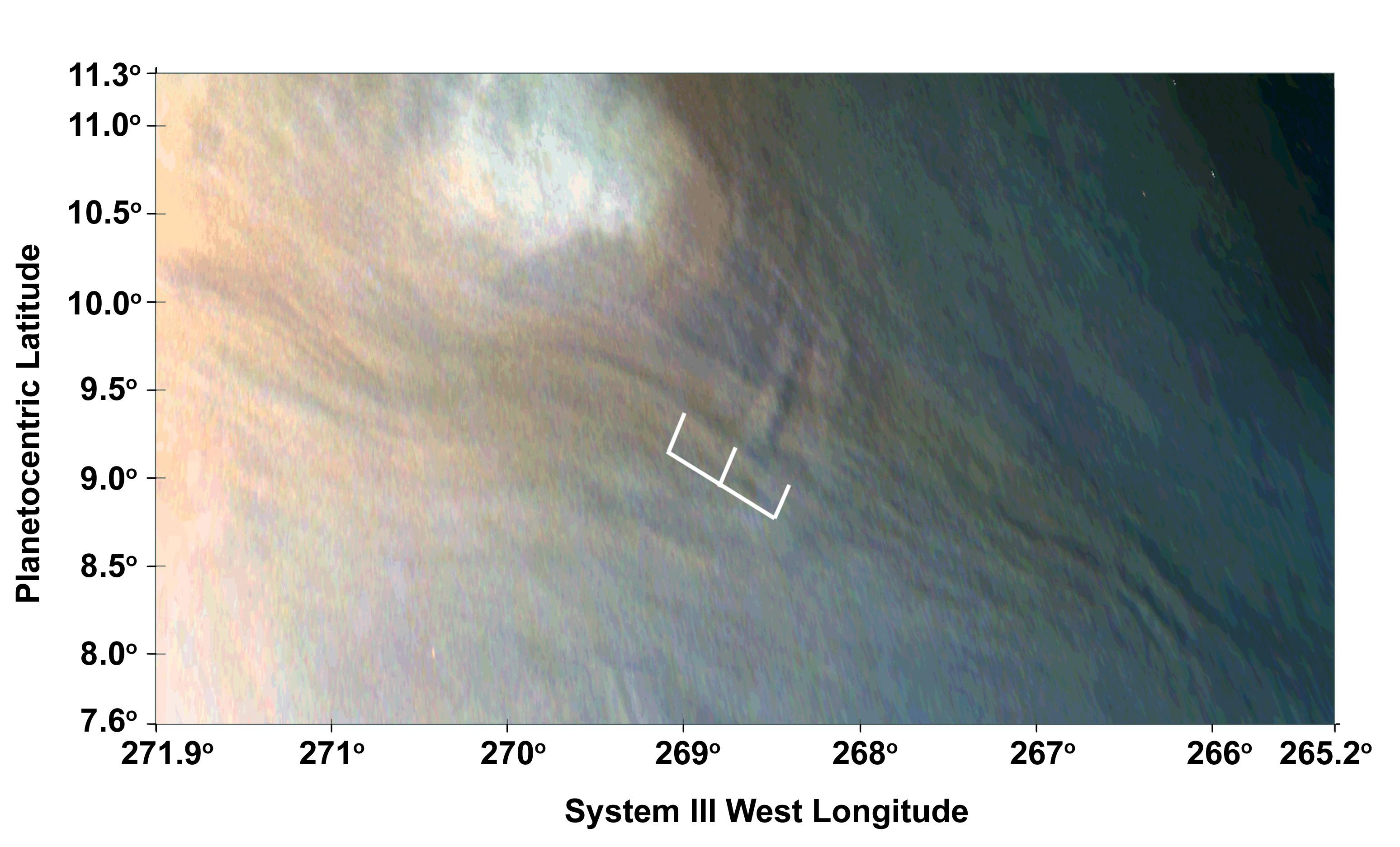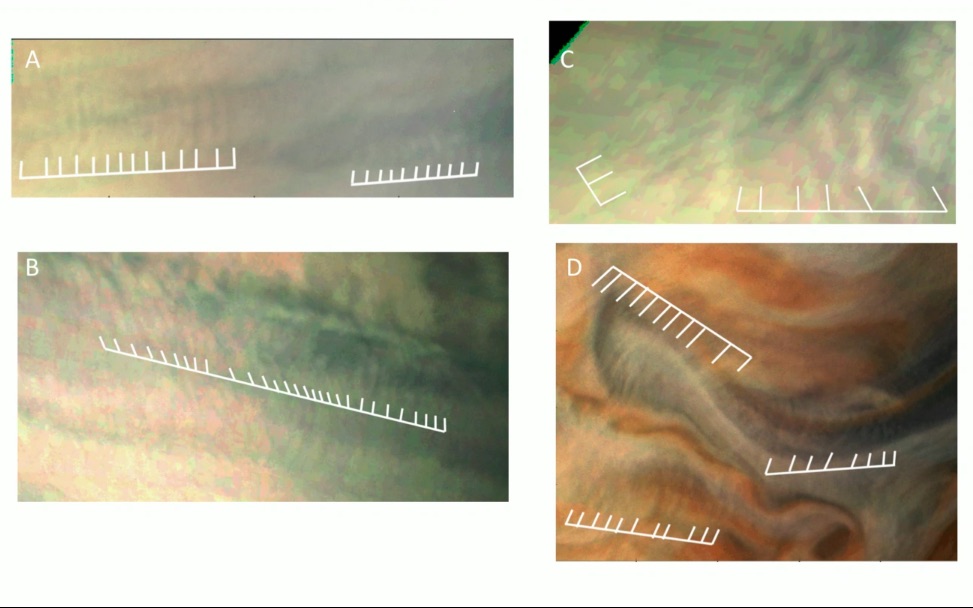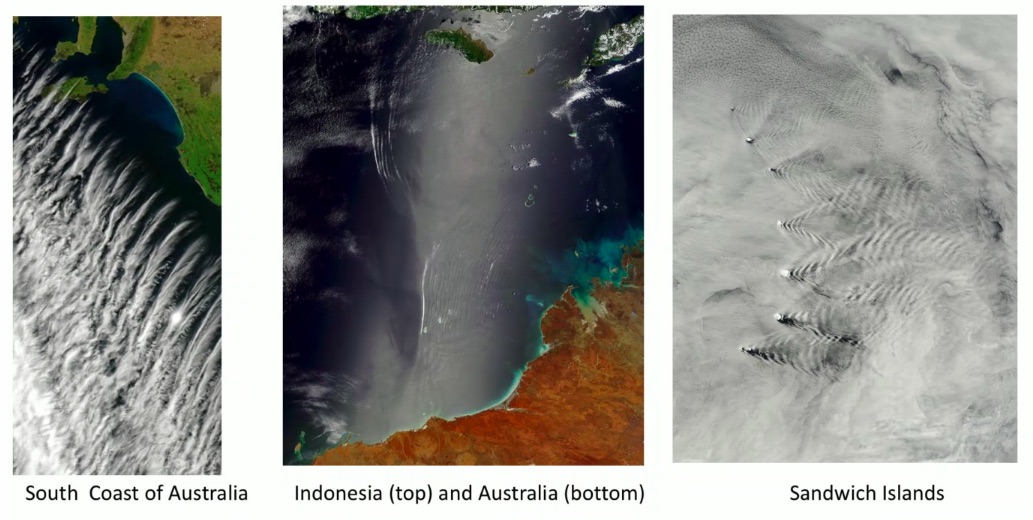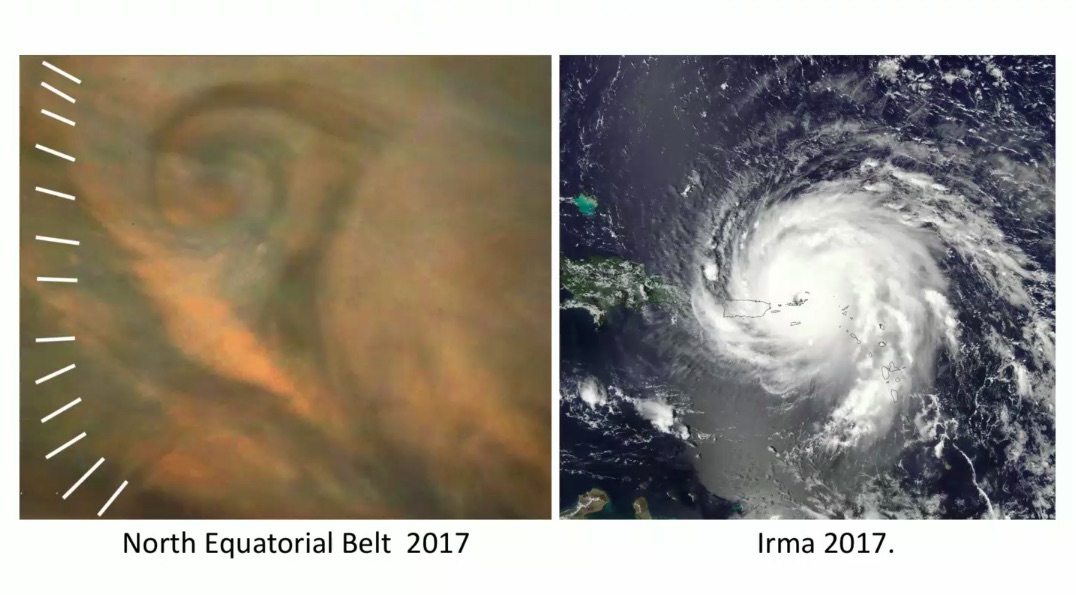Jupiter's Wavy Atmosphere Resembles Earth's Clouds in Photos from NASA's Juno Probe
KNOXVILLE, Tenn. — Jupiter and Earth may look like two completely different planets, but the planets' atmospheres seem to have something in common, new images from NASA's Juno mission have revealed.
NASA's Juno spacecraft, which has been orbiting Jupiter since 2016, captured images of small-scale wave patterns in Jupiter's atmosphere during a series of close flybys called "perijoves." Imaged with the spacecraft's JunoCam instrument, these small wave patterns bear some resemblance to cloud formations found on Earth.
Images and data from Juno were revealed here at the 50th meeting of the American Astronomical Society's Division for Planetary Sciences (DPS). "We've discovered a huge number of very small-scale waves in the atmosphere," Glenn Orton, a research scientist at NASA's Jet Propulsion Laboratory in Pasadena, California, said in a news conference on Monday (Oct. 22). [In Photos: Juno's Amazing Views of Jupiter]
"You would typically call these mesoscale waves in Earth's atmosphere," Orton said. On Jupiter, these so-called "atmospheric wave trains" are "towering atmospheric structures that trail one after the other as they roam the planet, with most concentrated near Jupiter's equator," NASA officials said in a statement.
These wave features were first seen by NASA's two Voyager missions when they flew by Jupiter in 1979 and again in 1996 when the agency's Galileo spacecraft was orbiting the planet. Now Juno has found the same kind of waves, but the wave crests are much closer together than those seen in previous missions.
Small-scale waves recently imaged by Juno are spaced between 34 miles and 168 miles (55 and 270 kilometers) apart, while images from Galileo and the Voyagers showed waves that were 68 miles to 190 miles (110 to 305 km) apart.
"Just like we see in the Earth’s atmosphere, we have some sort of perturbation of [Jupiter's] atmosphere," Orton said. "We see material like water that condenses into cloud. On Jupiter, this would be probably ammonia, an upper-level condensate in the atmosphere."
Breaking space news, the latest updates on rocket launches, skywatching events and more!
The Jovian waves seem to behave a lot like gravity waves in Earth's atmosphere (not to be confused with gravitational waves), Orton said. "These things sink down again in equilibrium, and then they just rise up again, oscillating back and forth. So, every time you see that peak, you see a condensation in the Earth’s atmosphere." By measuring the shadow of one of the waves, researchers determined that it protruded about 6.2 miles (10 km) above the background clouds.
Here on Earth, these rippled clouds form above thunderstorm updrafts and other disturbances that can disrupt airflow in the atmosphere. Some of the waves seen in Jupiter's atmosphere resemble cyclones on Earth with "spoke-like" features, Orton said as he showed a side-by-side comparison of a JunoCam image and a satellite image of hurricane Irma.
NASA officials said that while "most waves are expected to be atmospheric gravity waves," scientists are still analyzing the data and have not yet confirmed that this is the case.
While scientists work to determine exactly what creates these waves on Jupiter, they are also trying to explain why the waves are not always present. After the Voyagers first discovered the waves, there were periods during which the missions didn't see any waves on the planet at all. So far, Juno has been able to see these waves during every close flyby of Jupiter.
A lack of waves at any given time may indicate that Jupiter's atmosphere is static, Orton said. When the waves are present, they may present clues about what's going on deeper inside Jupiter's atmosphere.
Email Hanneke Weitering at hweitering@space.com or follow her @hannekescience. Follow us on Twitter @Spacedotcom and on Facebook. Original article on Space.com.

Hanneke Weitering is a multimedia journalist in the Pacific Northwest reporting on the future of aviation at FutureFlight.aero and Aviation International News and was previously the Editor for Spaceflight and Astronomy news here at Space.com. As an editor with over 10 years of experience in science journalism she has previously written for Scholastic Classroom Magazines, MedPage Today and The Joint Institute for Computational Sciences at Oak Ridge National Laboratory. After studying physics at the University of Tennessee in her hometown of Knoxville, she earned her graduate degree in Science, Health and Environmental Reporting (SHERP) from New York University. Hanneke joined the Space.com team in 2016 as a staff writer and producer, covering topics including spaceflight and astronomy. She currently lives in Seattle, home of the Space Needle, with her cat and two snakes. In her spare time, Hanneke enjoys exploring the Rocky Mountains, basking in nature and looking for dark skies to gaze at the cosmos.




